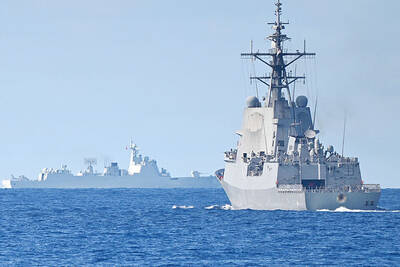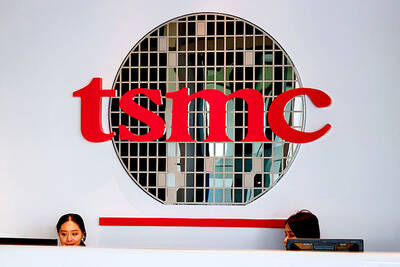Hand soaps provided in restrooms in public venues have been found to contain exceedingly high numbers of viable bacteria, including Escheridic coli and Pseudomonas aeruginosa, that may cause potentially life-threatening infections, a test commissioned by a newspaper showed.
The Chinese-language Apple Daily reported yesterday that half of the hand soap samples it took from 20 public restrooms in airports, high-speed railway (HSR) stations, MRT stations, train stations, department stores and fast-food chains in four cities around the country were found to harbor viable bacteria.
The test was conducted by Super Laboratory, a nationally recognized testing laboratory, the paper said.
Under the lab’s advice and after consulting with experts on infectious diseases, the paper tested the samples for viable bacteria including Staphylococcus aureus, Pseudomonas aeruginosa and E coli.
Out of the 10 places that were found to have viable bacteria in their restrooms’ hand soaps, seven had counts exceeding the 1,000-colony-forming-unit-per-gram (cfulg) limit set by the Ministry of Health and Welfare for unopened, packaged cosmetic products by between 1.2-fold and 32,999-fold, the paper said.
The seven public venues were: the Taiwan Railways Administration’s Taichung and Kaohsiung stations, MRT Taipei Main Station, HSR Taipei Station, Taipei International Airport (Songshan), Kaohsiung Hanshin Department Store and MOS Burger’s Taipei Xinsheng S Road branch.
The soap in the female restrooms at the Greater Taichung Station was found to have more than 33 million bacteria per gram.
Songshan airport’s hand soap tested positive for Pseudomonas aeruginosa, and the MOS Burger branch for E coli.
Environmental Protection Administration officials suspected that the contamination was caused by people having physical contact with the container and leaving bacteria on it when reaching for the hand soap in the dispenser, the Apple Daily said.
The agency said that many restroom attendants refill soap dispensers before they are empty, which could cause bacteria growth.
According to the Central News Agency, the Greater Taichung Government’s health bureau dispatched inspectors to the station and had samples taken immediately after the report was published.
The results will be released in a week, the bureau said.
In response to the report, the Food and Drug Administration said that the maximum allowable level of viable microorganisms in cosmetic products has been set at 1,000 CFU per gram or milliliter, and E coli, P aeruginosa and S aureus should not to be detected at all.
The agency added that in its annual inspection of cosmetic products a total of 103 products were checked for infectious microorganisms last year, and five were found to have exceeded the limit, but none tested positive for the three types of bacteria stated above.

NO LIVERPOOL TRIP: Taiwan’s Lin Yu-ting, who won a gold medal in the boxing at the Paris Olympics, was embroiled in controversy about her gender at that event Taiwanese boxer Lin Yu-ting (林郁婷) will not attend this year’s World Boxing Championships in Liverpool, England, due to a lack of response regarding her sex tests from the organizer, World Boxing. The national boxing association on Monday said that it had submitted all required tests to World Boxing, but had not received a response as of Monday, the departure day for the championships. It said the decision for Lin to skip the championships was made to protect its athletes, ensuring they would not travel to the UK without a guarantee of participation. Lin, who won a gold medal in the women’s 57kg boxing

RESPONSE: The transit sends a message that China’s alignment with other countries would not deter the West from defending freedom of navigation, an academic said Canadian frigate the Ville de Quebec and Australian guided-missile destroyer the Brisbane transited the Taiwan Strait yesterday morning, the first time the two nations have conducted a joint freedom of navigation operation. The Canadian and Australian militaries did not immediately respond to requests for comment. The Ministry of National Defense declined to confirm the passage, saying only that Taiwan’s armed forces had deployed surveillance and reconnaissance assets, along with warships and combat aircraft, to safeguard security across the Strait. The two vessels were observed transiting northward along the eastern side of the Taiwan Strait’s median line, with Japan being their most likely destination,

‘NOT ALONE’: A Taiwan Strait war would disrupt global trade routes, and could spark a worldwide crisis, so a powerful US presence is needed as a deterrence, a US senator said US Senator Deb Fischer on Thursday urged her colleagues in the US Congress to deepen Washington’s cooperation with Taiwan and other Indo-Pacific partners to contain the global security threat from China. Fischer and other lawmakers recently returned from an official trip to the Indo-Pacific region, where they toured US military bases in Hawaii and Guam, and visited leaders, including President William Lai (賴清德). The trip underscored the reality that the world is undergoing turmoil, and maintaining a free and open Indo-Pacific region is crucial to the security interests of the US and its partners, she said. Her visit to Taiwan demonstrated ways the

The US has revoked Taiwan Semiconductor Manufacturing Co’s (TSMC, 台積電) authorization to freely ship essential gear to its main Chinese chipmaking base, potentially curtailing its production capabilities at that older-generation facility. American officials recently informed TSMC of their decision to end the Taiwanese chipmaker’s so-called validated end user (VEU) status for its Nanjing site. The action mirrors steps the US took to revoke VEU designations for China facilities owned by Samsung Electronics Co and SK Hynix Inc. The waivers are set to expire in about four months. “TSMC has received notification from the US Government that our VEU authorization for TSMC Nanjing